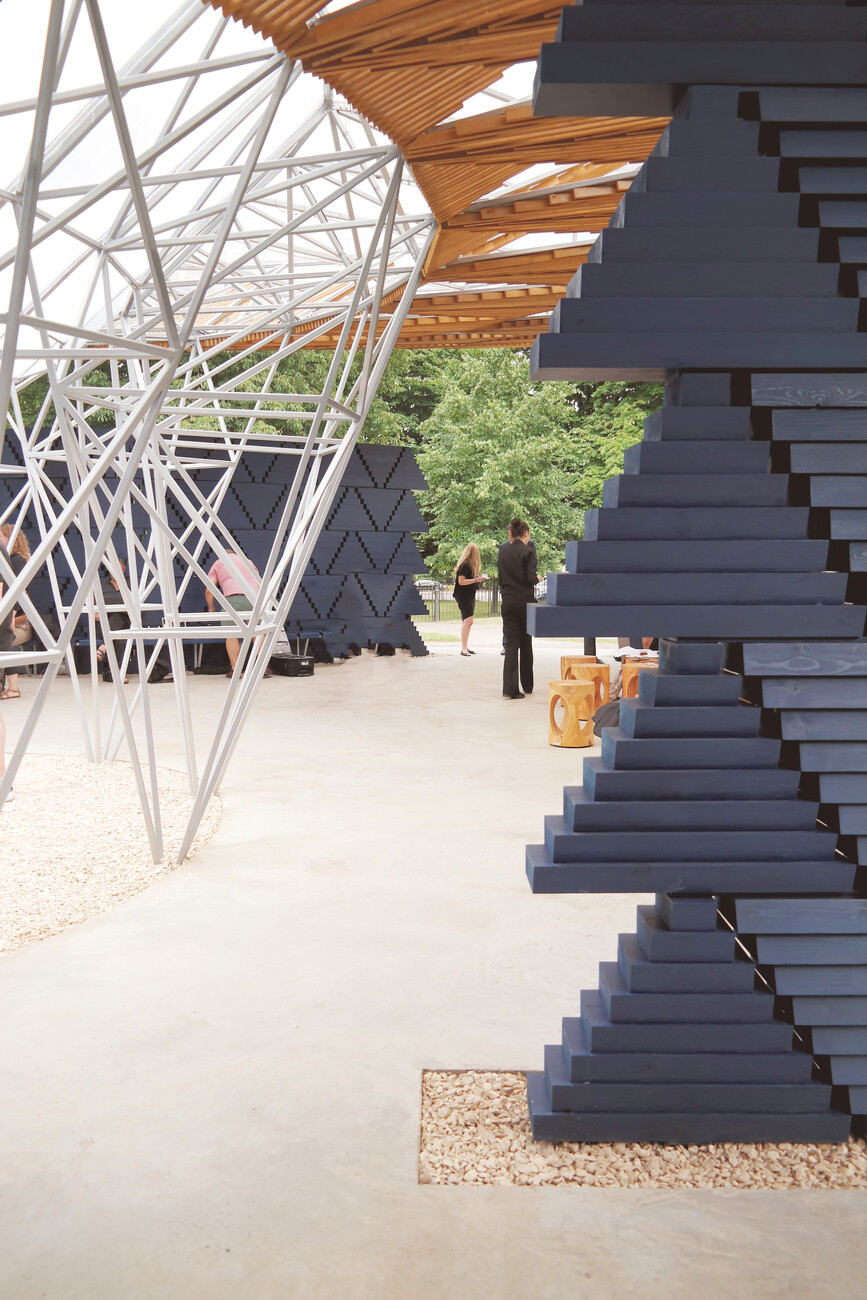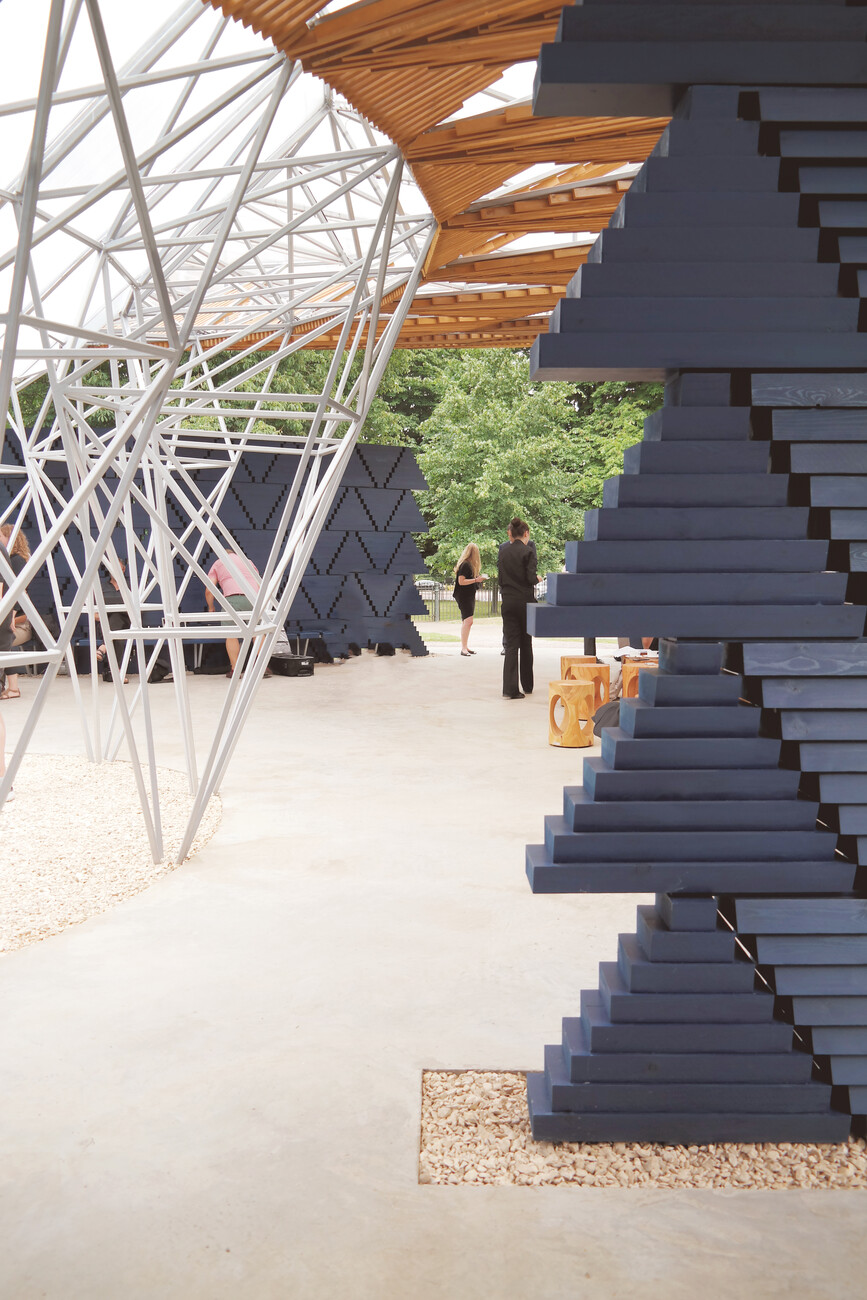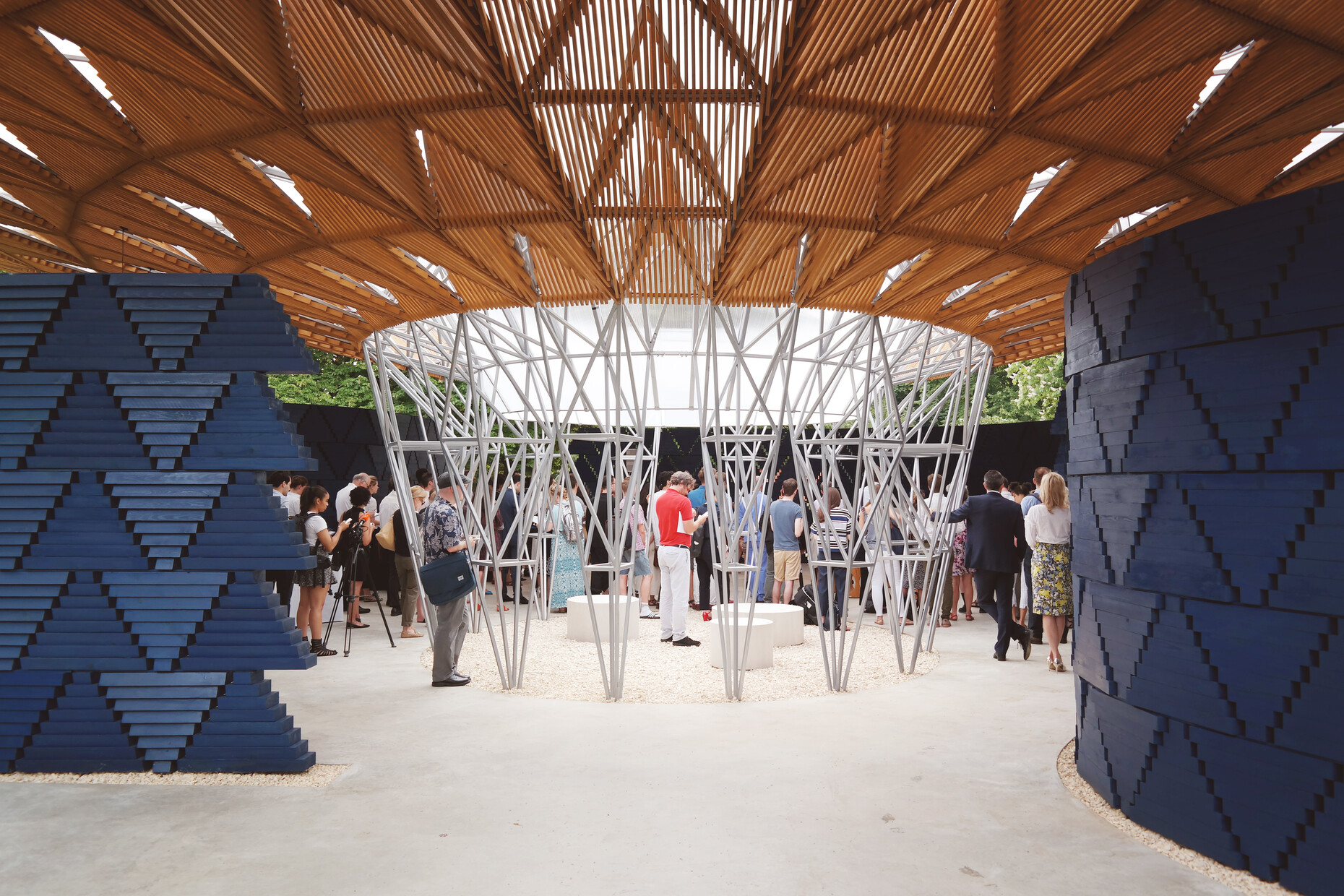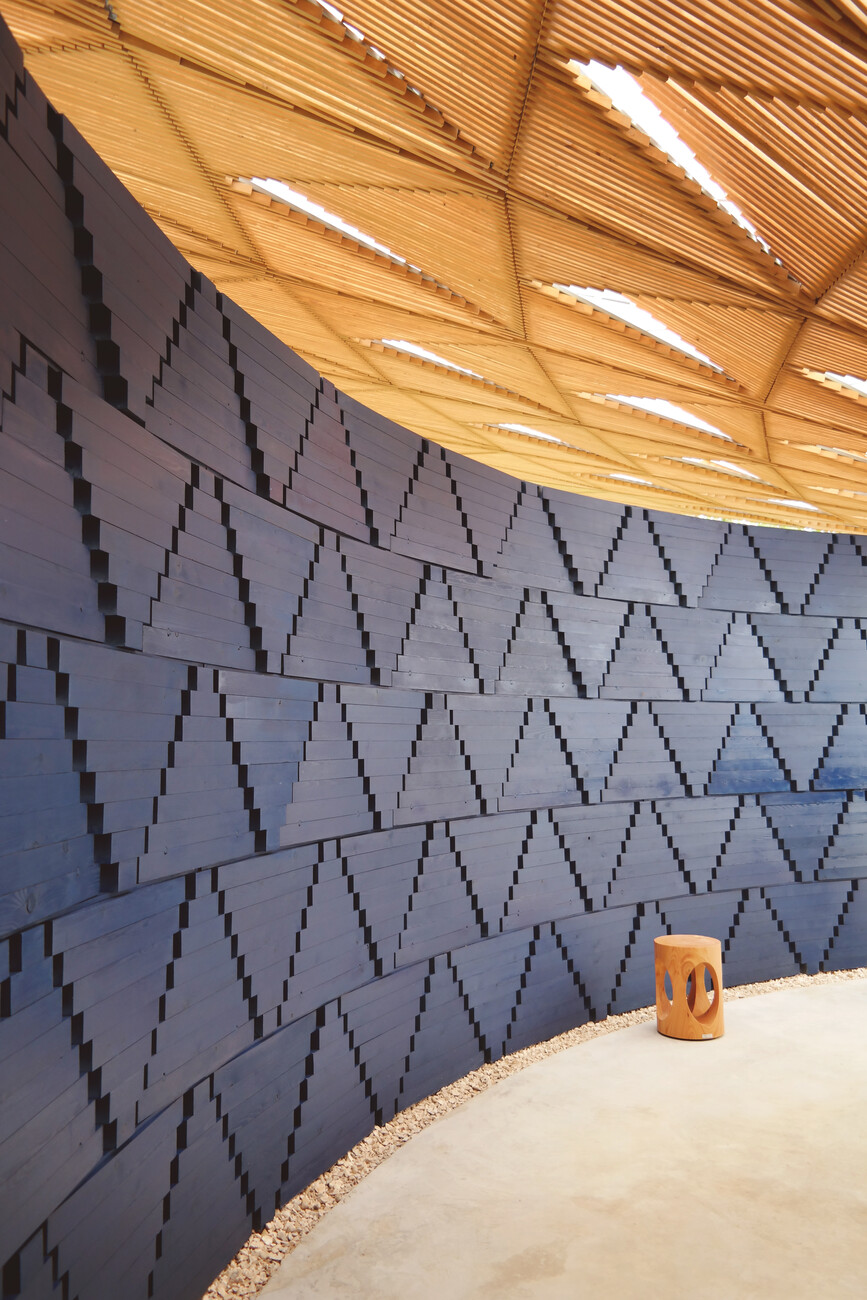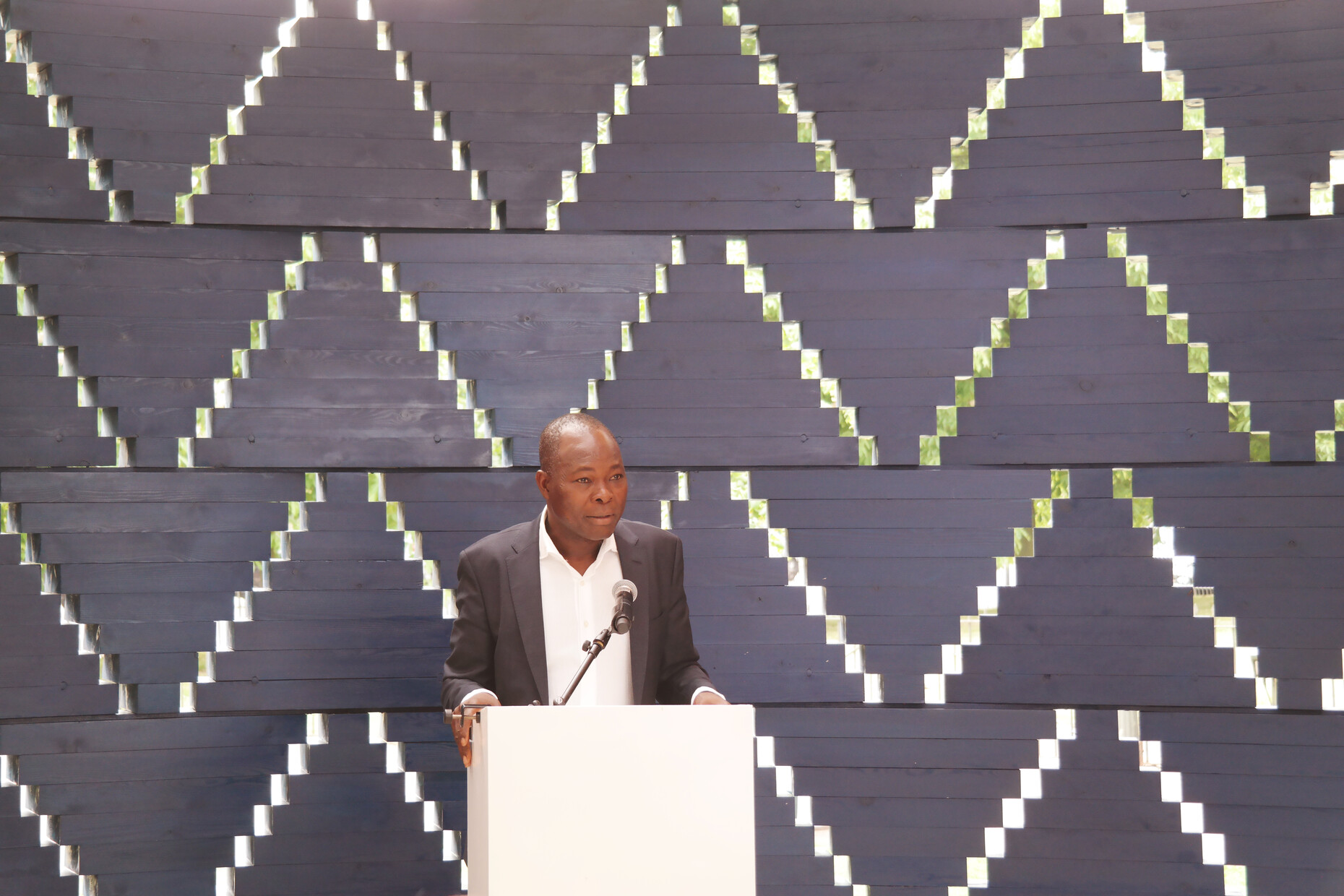Like a Tree
On 20 June, Diébédo Francis Kéré unveiled the new Serpentine Pavilion in London’s Kensington Gardens. Each year, the gallery invites an architect to build the temporary structure in front of its historical building. The spectacular space is then used for discussions, debates, parties and events. The only condition is that the company selected has not yet realized a building in the UK, making each pavilion a “UK first”. Kéré is the 17th architect to receive the honor and now takes his place alongside the likes of Rem Koolhaas, Peter Eisenman, Frank Gehry, Zaha Hadid, Daniel Libeskind, Toyo Ito and Herzog & de Meuron.
Born in Burkina Faso, Francis Kéré studied Architecture in Berlin where he also founded and runs his office – and is thus the first African architect to design the pavilion. He was inspired by his childhood in an arid desert land and the design is therefore meant to resemble a generous tree with wide sprawling branches. “In Burkina Faso,” he says at the press conference, “the tree is a place where people gather.” The temporary structure is intended to be “responsive” in the sense of connecting its visitors to nature – and one another.”
Indeed, the semi-transparent, perforated structure allows the sunlight to penetrate the inside, promoting “a sense of freedom and community”. Despite this architectural cliché (and the real trees around), Kéré’s pavilion is a beautifully-crafted structure with bright colors. Once inside, glimpses of the park appear against the warm blue wood foreground. “If you look up, the light changes everywhere you look. Maybe it's naive, but we wanted you to be still connected to nature and see the trees.”
“I wanted to present myself and my architecture in blue,” Kéré continues. “In my culture, blue is an important color. For young men, if you have to match the dream of your life, you wear the best clothes you have for the first time. You dress in indigo blue and you approach the house of your dreams… And everyone knows that you are shiny and there’s no competition.” Drawing on this narrative, Kéré has surrounded the steel structure in the center with four curved walls of indigo blue wood, “a natural material that simply wants to be used.”
Is it too much of a cliché to have an African-born architect build an artificial tree as a gathering space in front of London’s Serpentine Gallery? At least during the press conference, on one of the hottest days of the year so far, the pavilion’s premise of providing shelter with its shading roof and effective cross-ventilation from the perforated, textile-like enclosure is celebrated. Kéré smiles: “The walls are open, the pavilion is open. It is simple, you see.”
The heat will of course not persist and usually the weather in London is rather wet – and Kéré’s design has a good way to accommodate this, too. The central oculus creates an enclosed, sun-filled space on good days, only to turn into a waterfall when it rains thanks to the funnels on the canopy. “We decided to celebrate the water,” Kéré says. “We’re in London and you have everything here, but all over the world water is a precious commodity so I wanted to celebrate this here where water is so normal.” The water will be collected and used for the park’s irrigation system. Is this a primitive hut or a decorated shed? The Serpentine Gallery in the persons of Hans Ulrich Obrist and Yana Peel were not sure, but wanted to stress that this year’s pavilion “highlights the power of simplicity by reducing architecture to its core elements.” So there’s a glimmer of hope for a project which seemed a bit lifeless last year with the somewhat disappointing structure (by Bjarke Ingels) and the attempt to establish a new tradition of four mini summer houses (by Kunlé Adeyemi, Barkow Leibinger, Yona Friedman and Asif Khan). Luckily, the latter idea was dropped this year, and with Kéré’s thoughtful and nicely crafted structure, the idea of a temporary summer space seems still relevant today, even if it is in its 17th year and dozens of galleries and museums around the world have since copied the scheme.

